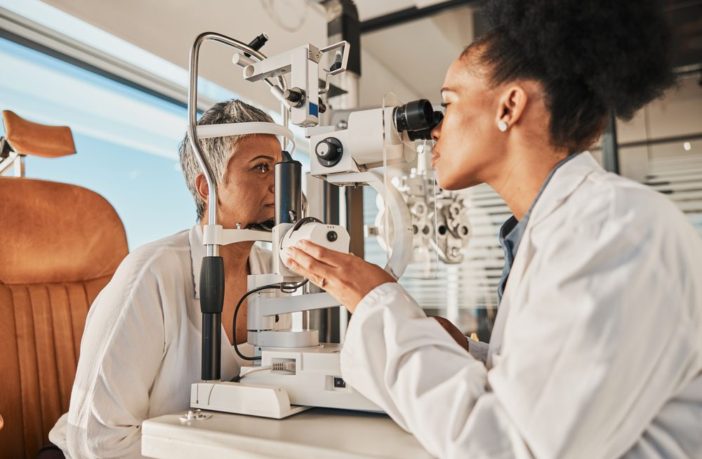Double vision — clinically identified as diplopia — stands as a perplexing and formidable condition, especially for those individuals who have undergone the daunting experience of a stroke. The aftermath of a stroke often presents survivors with a myriad of challenges, and among them, visual disturbances, such as double vision, can significantly impede the journey to recovery. Navigating the complex landscape of post-stroke double vision requires a nuanced understanding of its intricacies, which we aim to unravel in this comprehensive article.
The occurrence of double vision post-stroke is not merely an optical anomaly; it is a manifestation of the intricate interplay between the neurological aftermath of a stroke and the delicate mechanisms that govern vision. This condition can be disorienting and overwhelming, impacting the affected individuals both physically and emotionally. As they strive to regain control over their lives, stroke survivors may find themselves wrestling with the challenge of re-establishing a sense of visual normalcy.
In the following sections, we will embark on a thorough exploration of the phenomenon of double vision after a stroke, shedding light on its underlying mechanisms and offering a multifaceted perspective on the ways it manifests. Our aim is not only to elucidate the science behind post-stroke double vision but also to provide valuable insights into practical strategies and coping mechanisms. By delving into seven key aspects of this visual disturbance, we hope to empower both stroke survivors and their caregivers with the knowledge and tools necessary to navigate this particular facet of the recovery process.
From understanding the neural pathways implicated in double vision to exploring the potential impact on daily activities, we will traverse a comprehensive landscape. Moreover, we will delve into evidence-based approaches and interventions that can be instrumental in managing and mitigating the challenges posed by post-stroke double vision. By the end of this article, readers will not only have a deeper comprehension of the intricacies surrounding this visual anomaly but will also be equipped with actionable insights to enhance the quality of life for those grappling with double vision in the aftermath of a stroke.
1. The Mechanics Behind Double Vision
Understanding why double vision occurs after a stroke is crucial. The brain’s intricate network — responsible for processing visual information — may be disrupted due to a stroke. This disruption can lead to misalignments in the eyes, causing images to be perceived as two separate entities.
2. Nerve Damage and Eye Muscles
Double vision may also arise from nerve damage or weakness in the eye muscles, another common consequence of a stroke. When the muscles fail to coordinate properly, the eyes may struggle to focus on a single point, resulting in double vision.
3. Medical Intervention and Rehabilitation
Consulting with a medical professional is paramount for stroke survivors experiencing double vision. Ophthalmologists and neurologists can conduct comprehensive assessments to determine the root cause. Rehabilitation programs, including eye exercises and therapies, may be recommended to improve eye muscle coordination.
4. Corrective Lenses and Prisms
In many cases, wearing corrective lenses or prisms can significantly alleviate double vision. These optical aids help to redirect light and bring images into proper alignment, offering a clearer and more focused vision for stroke survivors.
5. Patching and Covering Techniques
Patching one eye or using coverings can be an effective strategy to manage double vision. By blocking the vision in one eye, the brain may be encouraged to rely more heavily on the unaffected eye, reducing the impact of double vision.
6. Mindful Adaptations in Daily Activities
Living with double vision requires adaptive strategies in daily life. Simple measures, such as slowing down movements, using contrasting colors for better visibility, and maintaining well-lit environments, can significantly enhance the overall quality of life for stroke survivors dealing with this visual challenge.
7. Emotional Support and Rehabilitation Programs
Beyond the physical aspects, addressing the emotional toll of double vision is crucial. Joining support groups or participating in rehabilitation programs tailored to post-stroke challenges can provide not only practical guidance but also emotional support from individuals facing similar struggles.
Conclusion: Navigating the Journey to Visual Recovery
Double vision after a stroke is a complex condition that requires a multifaceted approach to management. Understanding the mechanics behind it, seeking professional intervention and adopting practical coping strategies are pivotal steps on the journey to visual recovery. By combining medical guidance with adaptive techniques, stroke survivors can regain a sense of control over their visual perception and embrace a more comfortable and fulfilling life post-stroke.
This story was created with AI technology.



